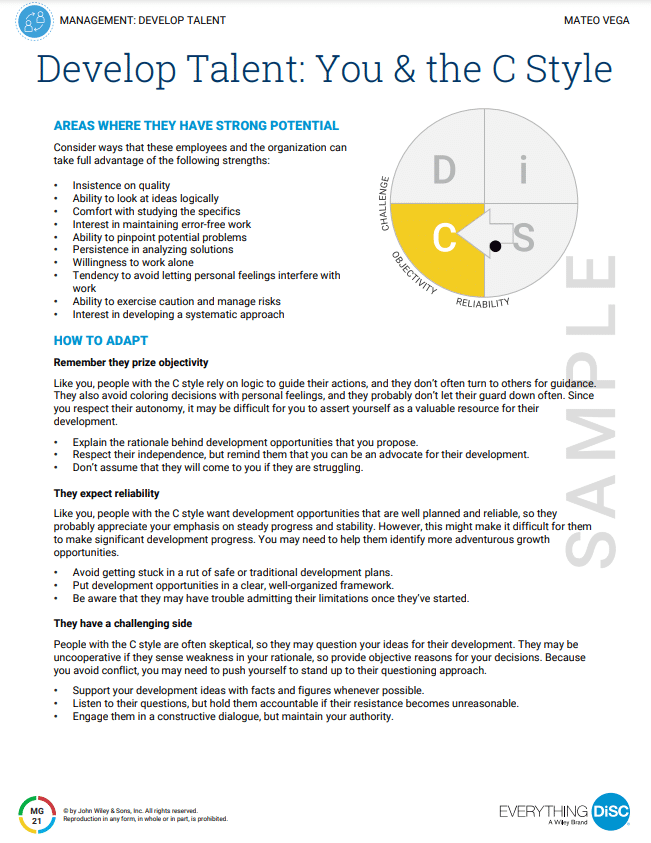1-on-1 Check-In Questions for Managers and Employees

Managers and employees alike make the mistake of seeing 1-on-1 check-ins as little more than clutter on their calendars. They might use them only as accountability or status checks. Move the manager-staff relationship from superficial to authentic with meaningful 1-on-1 check-in questions for managers and employees.
Key Takeaways
- It’s easy for managers and employees to go on autopilot with 1-on-1 check-ins. Doing so means they miss opportunities for personal growth and deep conversations.
- Effective 1-on-1 meetings can build meaningful manager-staff relationships.
- On this page, find sample questions for managers to ask employees and for employees to ask managers during check-ins.
Status updates belong in a project management system or tool. Performance problems deserve their own meeting. The regular 1-on-1 meeting is not for the manager’s benefit, but for the employee’s.
One-on-one meetings are a time for conversation, building a relationship, and ongoing feedback in both directions. They are a time to:
- check in on employees’ well-being and career goals
- listen to employees’ frustration or excitement
- get feedback on your own performance
The manager should be curious, ask questions, learn about challenges, welcome new ideas, be as candid as possible, and show empathy.
Few managers are taught how to hold useful 1:1 meetings with their team members. However, it’s a strong tool for developing, engaging, and motivating staff. These meetings also build trust, surface important issues, and maintain alignment of priorities.
Steven G. Rogelberg, author of Glad We Met: The Art And Science Of 1:1 Meetings
How frequent should 1-on-1 meetings be?
Having a regularly scheduled meeting that rarely gets moved or canceled shows staff that their managers value this individualized time with them. Questions and concerns can be brought up when they are still top-of-mind and immediately relevant.
Many leadership consultants recommend a half-hour meeting once a week. If anything is brought up that requires more attention, another meeting can be scheduled. It can be helpful to leave a few minutes available on your schedule after the meeting so you don’t have to rush away. New employees or those working on new or challenging tasks might appreciate longer meetings for a while.
If the meetings are feeling unproductive, consider scheduling them a little differently. Go for a walk together (even virtually), get coffee, or change the format somehow.
Ultimately the topics are up to the employee, but for some, this might be uncomfortable. The manager and employee can both contribute items to an agenda the day before. Or the manager can begin meetings with open-ended questions.
1-on-1 questions to ask employees
Asking these questions can help your employees understand how they can use this time. Listen more than you talk. Sometimes silence is the best invitation for the other to speak. Here are some sample questions for managers to ask employees during 1:1 check-ins:
- What’s been on your mind this week—work-related or otherwise?
- When do you plan to use your allotted time off? What are you looking forward to doing during that time?
- Is your work environment OK? What ways have you found to take breaks and move around a bit during your work day?
- How productive have you felt this past week? What contributed to this feeling?
- What are your current priorities, and are there any problems or concerns you would like to talk through?
- How does your workload feel? If you could give up some work, what would it be? If you could take on more work, what would it be?
- Do you think any tasks or opportunities should be prioritized differently for you or your team?
- Are there any barriers I can try to clear for you or your team?
- What feedback do you have for me? Is there anything I should do more of or less of?
- Is there anything you need that would enable you to be more productive, feel more connected to your team(s), or better understand the purpose of your work?
- Are there any educational activities you’d like to take advantage of? Or any skill you think your team is lacking?
- How do you feel about the direction the organization is going?
Managers should make it clear that it’s OK to use this time to confront tensions between the two of you, or talk about fears and hopes. Ideally, employees leave their one-on-one feeling heard, respected, included, valued, and trusted. Ideally, the manager-staff relationship moves from superficial to authentic.
What to listen for
- issues presented by more than one direct report
- issues beyond your ability to address
- feedback about your own performance as a manager
- systemic problems that should be brought to senior leadership
- ways you can build or reinforce positive work culture
- signals the employee is ready for more training, responsibilities, or advancement
While the one-on-one is focused on the individual, the manager may discover issues that could be better addressed at the team, department, division, or senior levels. Some issues might need to be taken to HR for assistance (as long as you have permission or aren’t betraying assumed confidentiality). Ideas might present themselves for building stronger teams or improving procedures—as long as the manager is listening for them.
1-on-1 questions to ask managers
Your one-on-one meetings are a great opportunity to build a relationship with your manager. You can discuss topics that don't fit neatly into team meetings or quarterly reviews. Don’t hesitate to ask questions that help you feel more empowered and informed. Here are some sample questions you can ask your manager during regular check-ins:
- What’s the most important thing I should be focusing on this week?
- How do you feel about my current workload? Are there areas where I could contribute more or shift my focus?
- Do you see any upcoming opportunities for me to develop new skills or take on more responsibility?
- Can you share any feedback on my recent performance? I don't want to wait until after my review if there are improvements I could be making now.
- How do you see the team’s priorities shifting in the next few weeks? What can I do to support those changes?
- Is there anything you’ve noticed that I could do differently to collaborate better with my team?
- Are there any upcoming organizational changes or projects that I should be aware of?
- How can I ensure I’m meeting expectations and helping the team reach its goals?
- Are there any professional development resources or training opportunities you recommend I pursue?
- What’s the best way for me to communicate with you when I need support or have questions outside of our one-on-ones?
By asking these types of questions, you can gain clarity about your role, strengthen your relationship with your manager, and ensure that your work is aligned with broader goals. It also shows initiative and helps ensure that your personal growth is supported.
Using Everything DiSC in 1-on-1 check-ins
Everything DiSC® Management profiles are a great place to begin a first one-on-one meeting. The report addresses issues of communication and motivation—critical things to understand right away. Managers and their staff can refer to the report while discussing how they can best work together.
If staff have a hard time offering feedback to the manager or the manager isn’t sure what kind of feedback to ask for, take a look at the report. It lists potential challenges for managers with specific styles. The manager can bring up one or two for discussion.
There’s also a section on developing talent based on the employees’ DiSC styles. This will be worth returning to before any one-on-one the manager knows will touch on related issues.

Whenever the conversation is slow during a 1-on-1, the manager can always pull out this report and ask if descriptions of the employee’s style are accurate.
If reviewing the page above for the C style, the manager might make note that this style of person is unlikely to reveal when they are struggling. So the manager can regularly ask a question to get at that employee’s current challenges.
Elsewhere in the report, the manager would learn that the C style prefers to have their accomplishments recognized privately and with concrete examples. So the manager could also include a regular, low-key recognition during their one-on-ones.
Employees want to feel supported and understood by their managers. This applies to both their work and their personal selves. The 1-on-1 meeting is a place for managers to provide that support and understanding.
Posted 11/29/2022, Last Updated 01/04/2025







